Bath Handing: What is the Difference Between Left and Right Handed Baths?

When shopping around for bathroom items, one phrase that you are likely to see in a number of different contexts is the word ‘handing,’ or variations of this such as ‘hand’ or ‘handed.’ This can apply to several products, causing a huge source of confusion for customers because handing can vary between products and even manufacturers.
When it comes to new baths, the subject of handing is mostly straightforward. However, there are elements that differ between brands and even types of products, which can throw the occasional curveball. As such, this guide will attempt to cover everything you need to know about the subject of bath handing, including:
- What is Bath Handing?
- Are All Baths Handed?
- What is the Difference Between Left-handed Baths and Right-handed Baths?
- What Are the Exceptions to the Standard Way of Bath Handing?
- Why Does Handing Matter?
- What Factors Affect Which Handing is Required?
- Measuring For A Handed Bath & Ordering the Correct One
What is Bath Handing?
The handing of a bath is, in a nutshell, refers to both the design of a bath and direction or orientation, and positioning, of the bath when it is fitted into a space.
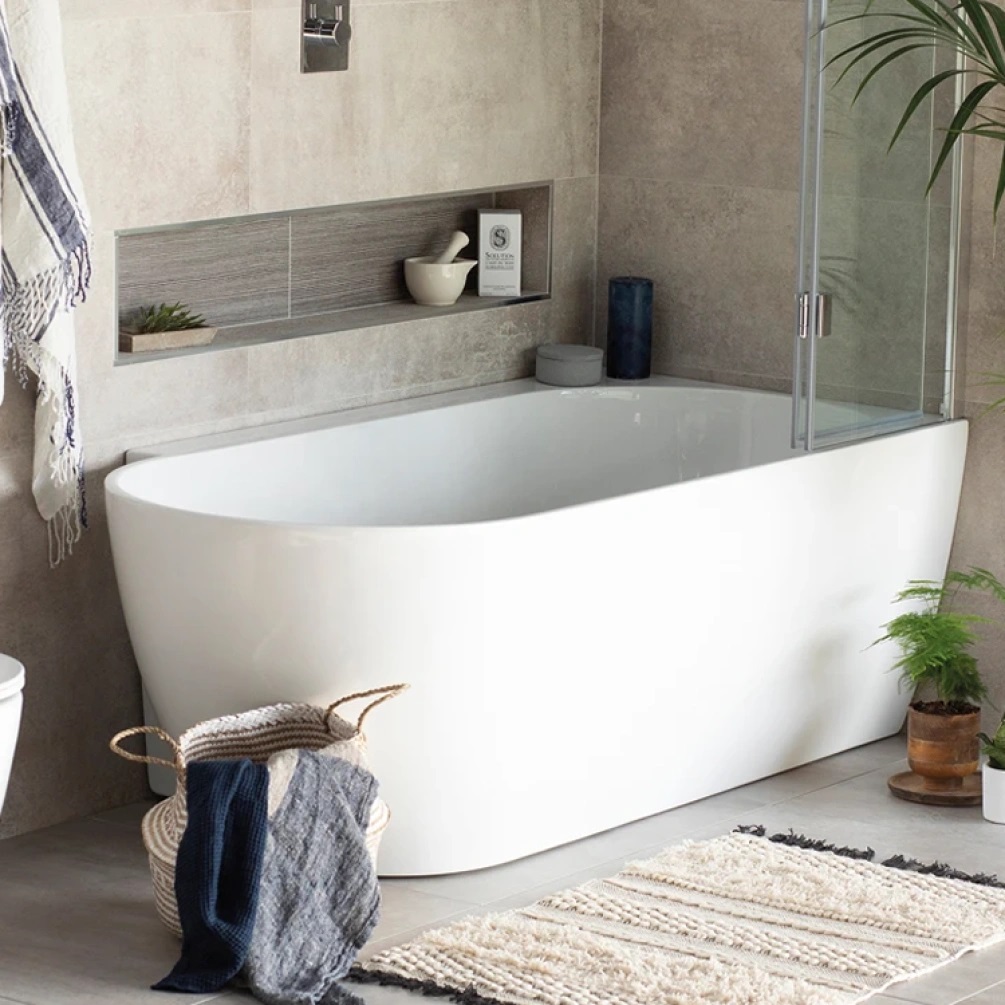
There is discussion about what element handing actually refers to, other than to mention that in the vast majority of cases, they generally all apply in the same way. The two elements that usually determine the handing of a bath are: which end of the bath is supposed to sit against your bathroom wall; and which end is the bathing end.
It is important that you correctly identify the handing of your bath at purchase to ensure that it is suitable for your space, while avoiding the expense of re-ordering the correct handing, or the costly and timely procedure of re-organising your entire bathroom and correcting the placement of its water inlets and pipework to accommodate for a differently oriented bathtub.
Are All Baths Handed?
Not all baths are handed and for most styles of tub, the direction of its installation or its positioning within your space should be either obvious or universal, such that it can be dictated by your personal preference.
Handing only really applies to a few types of bathtubs:
- Shower baths
- Corner & Offset Baths
- Standard or fitted baths & inset baths (both acrylic and steel)
Most freestanding baths, with exception to those that can be subcategorised as shower or corner baths, do not have a handing. The following section will cover how handing applies to these four types.
What is the Difference Between Left-handed Baths and Right-handed Baths?
Now that we have a definition of handing and an understanding of how it applies to the placement of a bath within a space, it is time to take more in depth look into the exact differences between left-handed baths and right-handed baths. It is worth caveating that, as mentioned previously, there are some exceptions which we will discuss and illustrate later in the article. It is always worth checking ahead of purchase to make sure that it is correct for your requirements if you are unsure.
Left-Handed Baths
A left-handed bath, in most cases, is a model that is installed against a wall on its left-hand side.
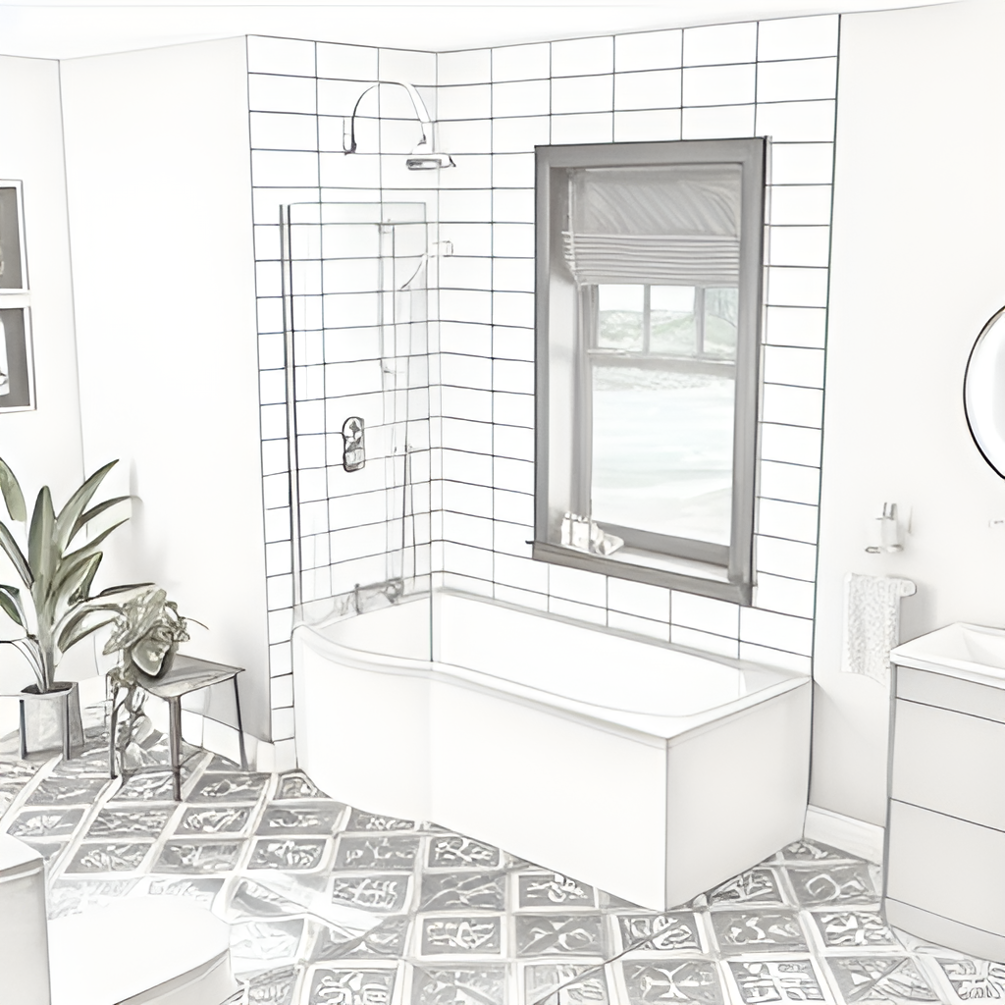
In the case of left-handed shower baths, these models would have their showering components at the left side of the bathtub when viewed from the side. In the case of P Baths and L-shaped baths, the widest end of the bathtub would also be on the left when viewed from this perspective. This end of the bath would be positioned against the wall for the shower system to be fitted.
For J-shaped baths, or corner baths, handing is determined by the positioning of their straight and curved ends. Left-handed models are installed with their straight end flush to a wall on the left of the bathtub, with their opposing curved end on the right.
In all instances, the bathing end of the bath is on the right-hand side of the bathtub. If you are ever confused about which end is the bathing end, remember how uncomfortable it feels to lie against your bath taps or overflow! The bathing end is specifically designed to be more comfortable, and will often have a more angled design to recline back into.
Right-Handed Baths
Right-handed baths are identified in exactly the same way as left-handed models, only in the opposite direction. For right-handed shower baths, this would be with the shower end or widest part installed against a wall on its right-hand side.
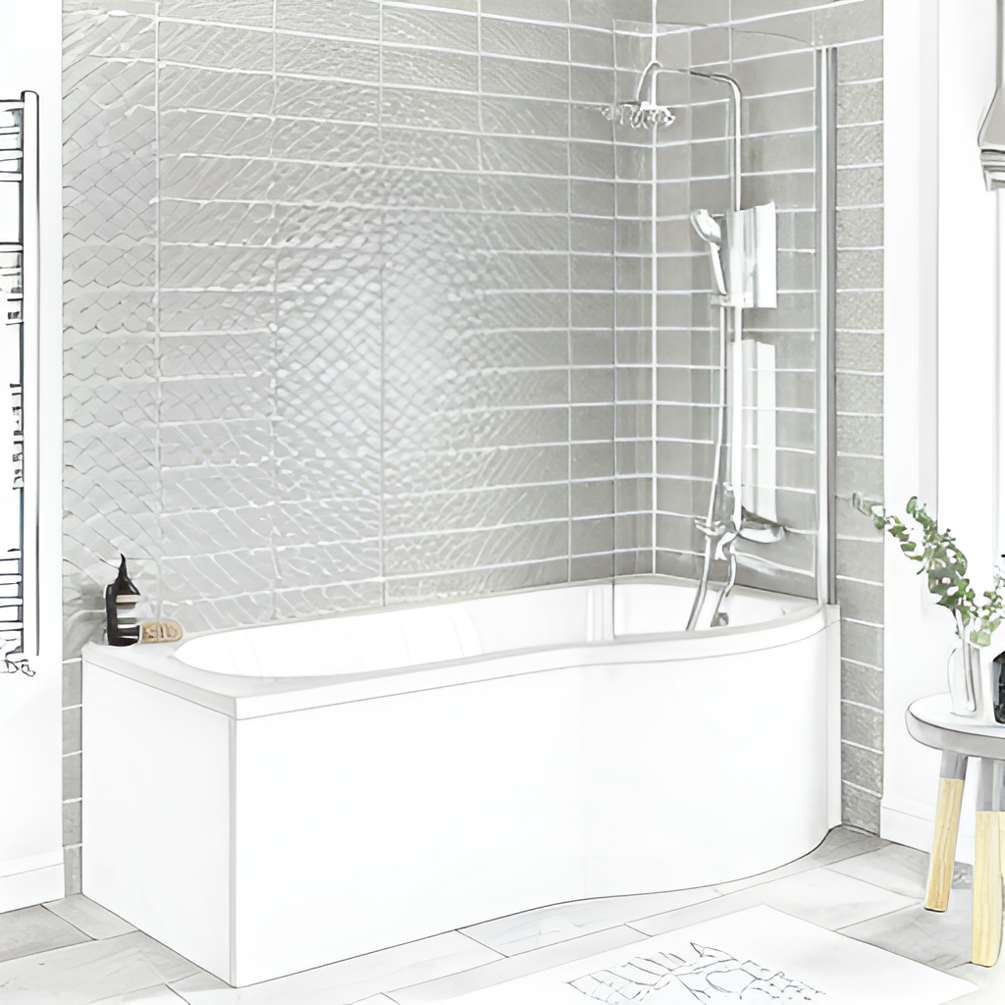
In the example of J Shaped Baths and Corner Baths, which feature one curved end and one straight end, the straight end of the bathtub would be installed with the wall against to the right hand side, with the curved end at the left-hand side.
The bathing end would be positioned to the left-hand side of the bath when installed if a shower bath, however, in both of these options there are also handed baths that can be installed without a showering end and are double-ended, meaning bathing is possible whichever side takes preference.
What Are the Exceptions to the Standard Way of Bath Handing?
As already referenced, there are some brands and types of baths that do not always follow the rules outlined in the previous sections. These tend to be those who manufacture steel baths, such as Kaldewei and Bette. If you are considering purchasing a bath from either of these brands, then it is worth paying specific attention to this section, as the way in which they categorise their baths are likely to be different. While there are a few baths in either range that conform to the rules outlined in the previous sections, the majority of their models follow the rules we will outline below.
Both companies subscribe to a definition of bath handing that is determined by the following two elements: the bathing end of the bathtub, and the position of the overflow. However, to avoid muddying the waters more than is necessary, we will simplify our own definition by keeping the overflow to the back of the bathtub when viewed from the side, as this is the position that is favoured most.
- Left-Handed Steel Baths have the bathing end to the left of the bathtub with the overflow at the back of the bath when viewed from the side (or length ways). The bathing end is visible by the curved and sloped shape, as opposed to the harsh, straight edge at the opposite end.
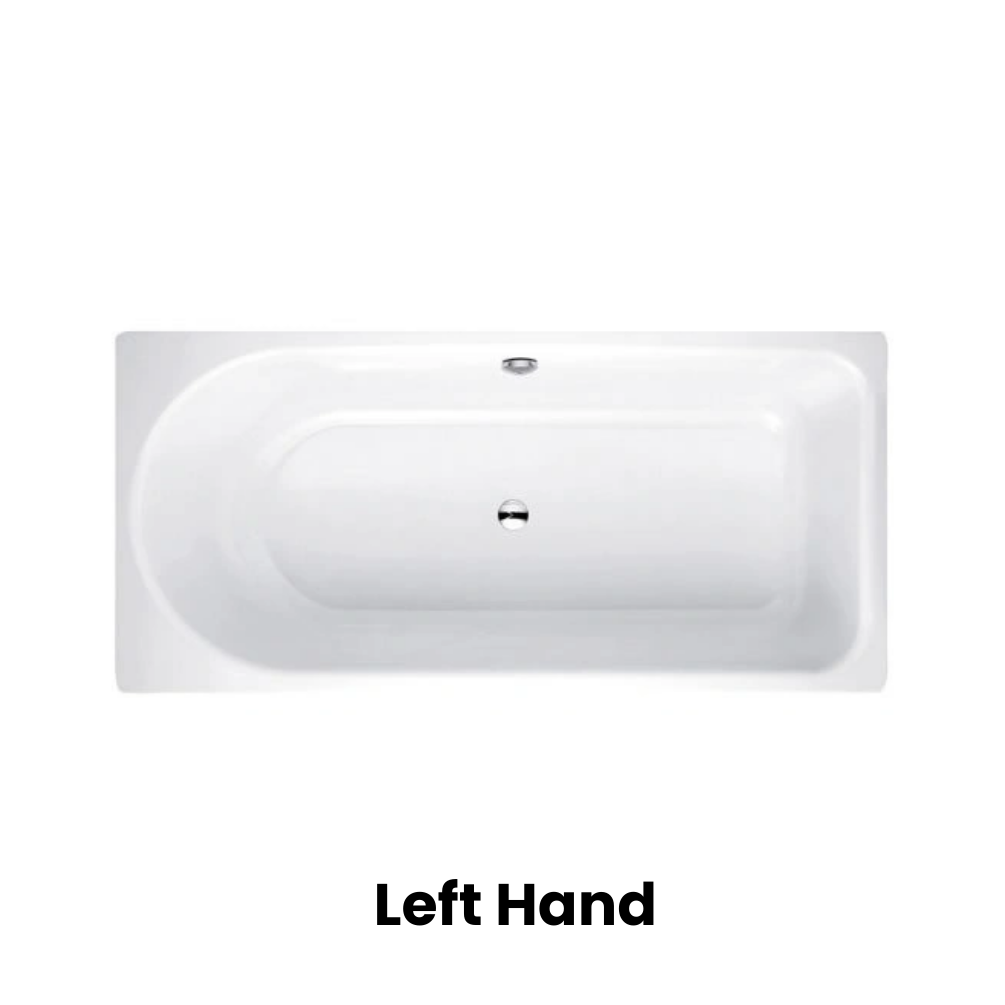
- Right-Handed Steel Baths have exactly the same design only in the opposite direction. They have the bathing end to the right of the bathtub with the overflow to the back of the bath when viewed side-on.
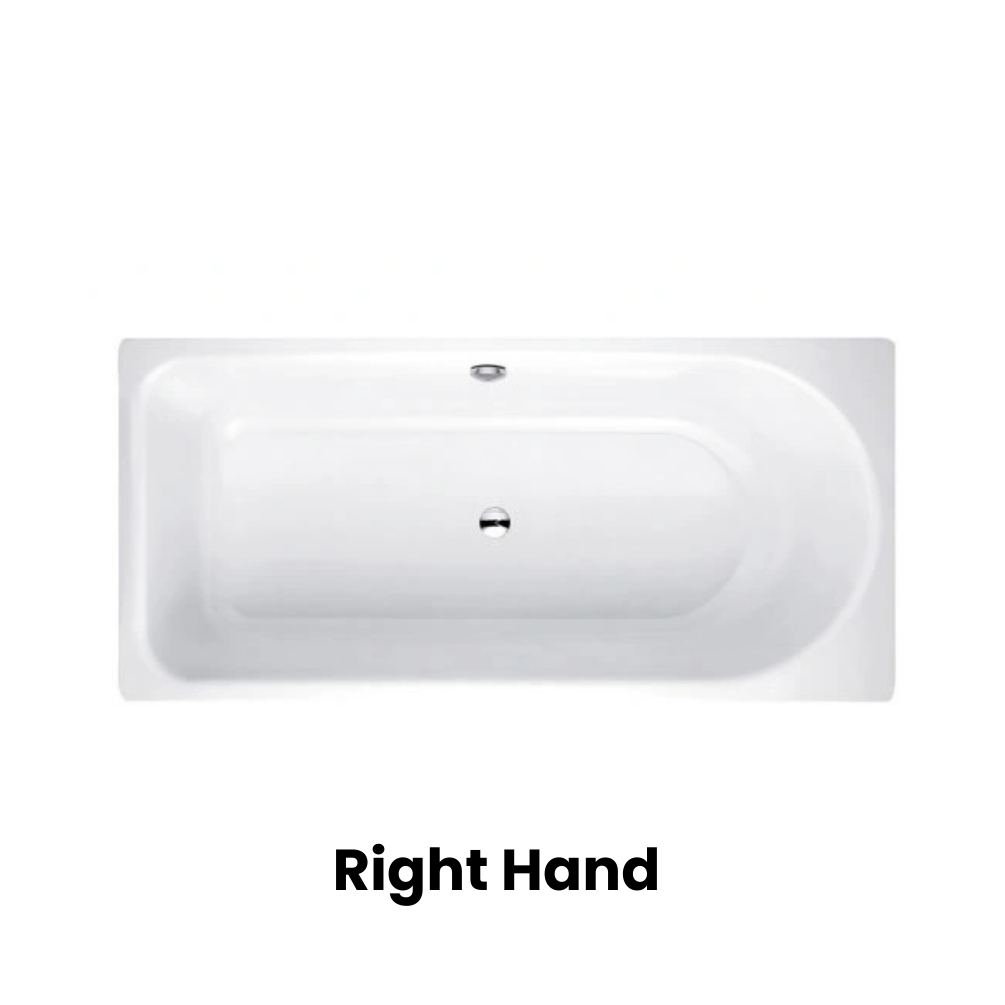
It is worth noting that both handed baths depicted in the ‘cut out’ images can be turned around or rotated 180 degrees so that their overflows are located on the near side of the bathtub, when viewed from the side. This would result in:
- The left-handed bath would have the bathing end to the right.
- The right-handed bath would have the bathing end to the left.
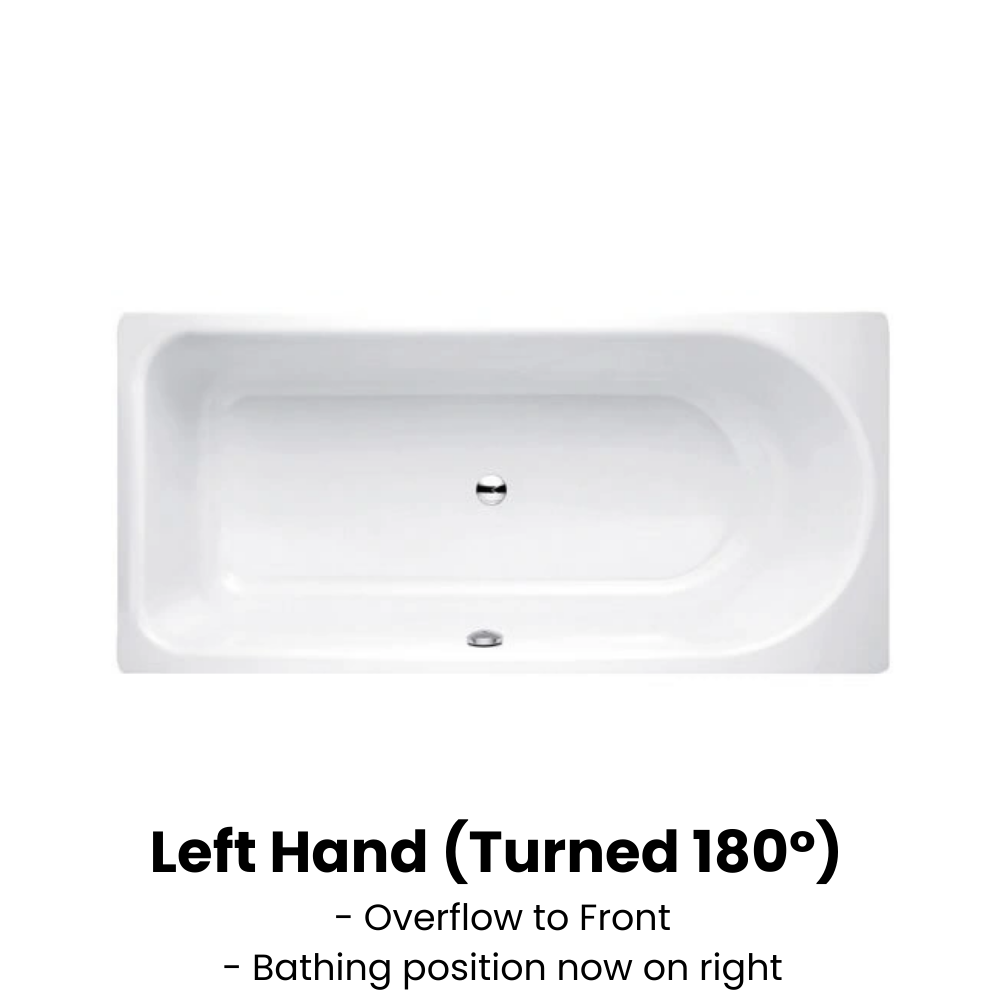
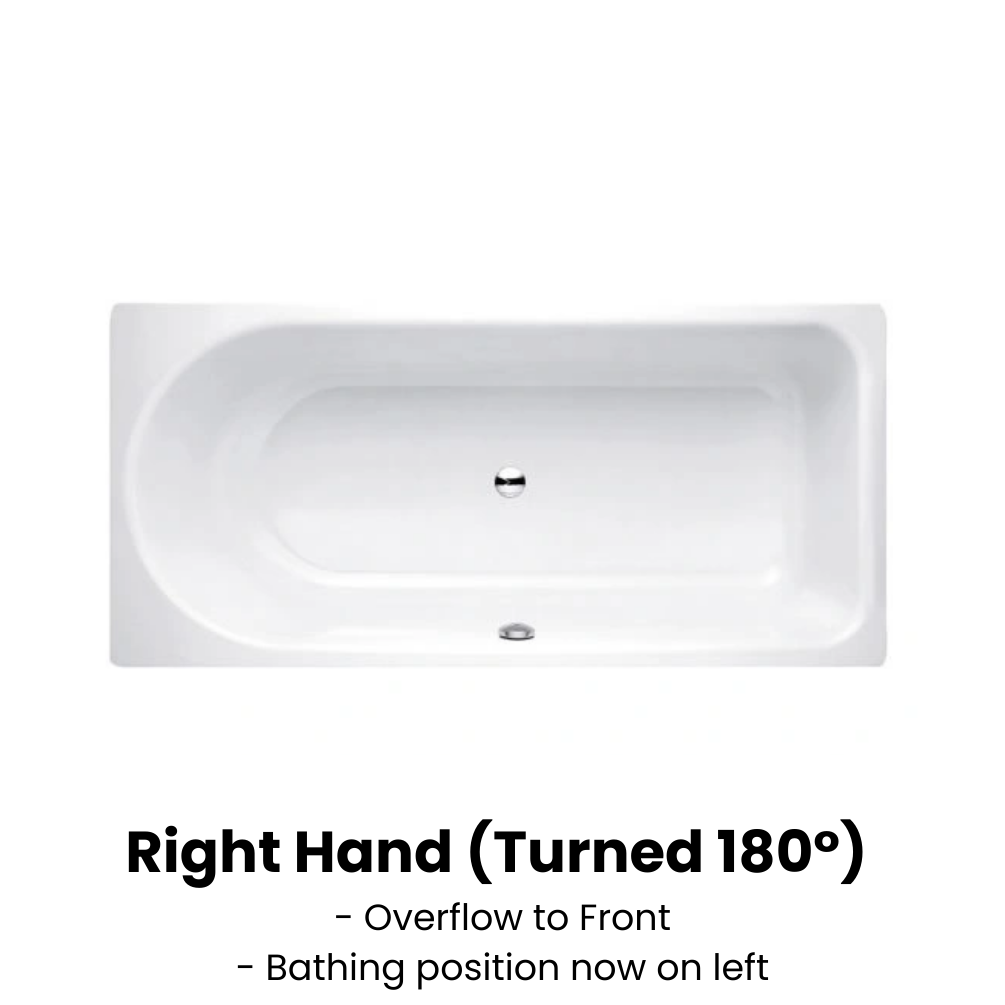
Why Does Handing Matter?
A handed bath only matters if you prefer or require one to accommodate the layout of your space. It isn’t an essential factor to have a bath with a handing and many people choose to install non-handed versions rather than opt for one that needs to be fitted in a specific direction.
However, when it comes to smaller bathrooms where space is at a premium, opting for a handed bath, especially with curved or J shaped design, can help to free up a few extra inches and make a room feel less claustrophobic.
For those on a budget, selecting a bath with a handing that adheres to the plumbing of a previous fixture is an effective way to avoid the additional expense of reconfiguring the plumbing of your space to accommodate a new model.
If the handing of the bath within your space is non-negotiable, then picking the correct handing is essential if you want to optimise the function of your new bathroom. In the case of shower baths, it is preferable for the showering side to be close to the water supply, while keeping in mind the direction you want the bath shower screen to be positioned. Moreover, if reconfiguring the handing of your bath comes at the expense of the accessibility into the room, or accessing other features, you may need to reconsider your new bathroom layout.
What Factors Affect Which Handing is Required?
Along with the importance of handing, there are several factors to take into consideration when it comes to handing, some of which have already been mentioned in previous sections. The key factors to consider are:
Existing layout of the room
Many people do not have the budget to completely rip apart and renovate a space, making do with extending or increasing the space where they can. Given the limitations and standard size of a lot of bathrooms in the UK, bath handing is often dictated by the layout you already have.
If your bathroom has been designed in a certain way, this could mean that options for fitting a bathtub are limited and, in turn, a handed bath is the best solution for making use of space without rendering the entire room impractical.
Size of the room
Tying into the layout is the size of your bathroom. Those with larger bathrooms have a lot more flexibility. However, for those with smaller bathrooms, your choice of bath can be pretty limiting. Smaller bathrooms can place restrictions on not only the size, but potentially the shape and, of course, the handing of your bath to ensure it can accommodate the configuration of the space. If a bath can only be fitted in a specific location, this means that only a certain handing direction is likely to be available.
Existing Location of Water Supply
Many people opt for the most cost-effective solution to ensure their budget is not entirely swallowed up rearranging their space, which often results in sticking with the current configuration of their fixtures. The obvious solution to this is to find a bath design, size and shape that suits your existing water supply and plumbing locations.
While you may feel compelled to opt for the most budget friendly solution, it is always worth considering whether redesigning your bathroom the way you want it would have more latency and value overall from re-plumbing the space to suit enjoyment of and design that suits you the most.
Personal Preference
The final consideration is the biggest: your personal preference. As with anything, it really comes down to what suits you the most, how you want your bathroom to look and which handing really helps create the space you have envisaged.
Measuring For A Handed Bath & Ordering the Correct One
When it comes to measuring for a handed bath, the first thing you will need to check and note for is the dimensions of the area the bath is going to be fitted into. Measuring the space – and, if you have one, the existing bath – should give an indication of the size of the space available. It is worth noting that bathroom tiles can affect the general dimensions of a space, making it seem smaller, which we cover in the understanding bath sizes guide here, so always measure the bath length itself.
When it comes to handed shower baths that are not rectangular, such as L shaped baths, P shaped baths or other variants, there are often two widths to consider due to one end being bigger than the other. This is why in some brochures or specifications, these baths will often come with two width dimensions written. For example, this may be something like 1700 x 850/700mm, which accounts for the width of each end.
The width of the showering area will always be larger for these types of handed baths, so when accounting for width in your space, it is always worth checking widest part of the bath against the dimensions of your bathroom to ensure that it would fit seamlessly into its intended space. The last thing you would want is a section of your new bath sticking out into the room, making it the room look odd or reducing the navigability of the space.
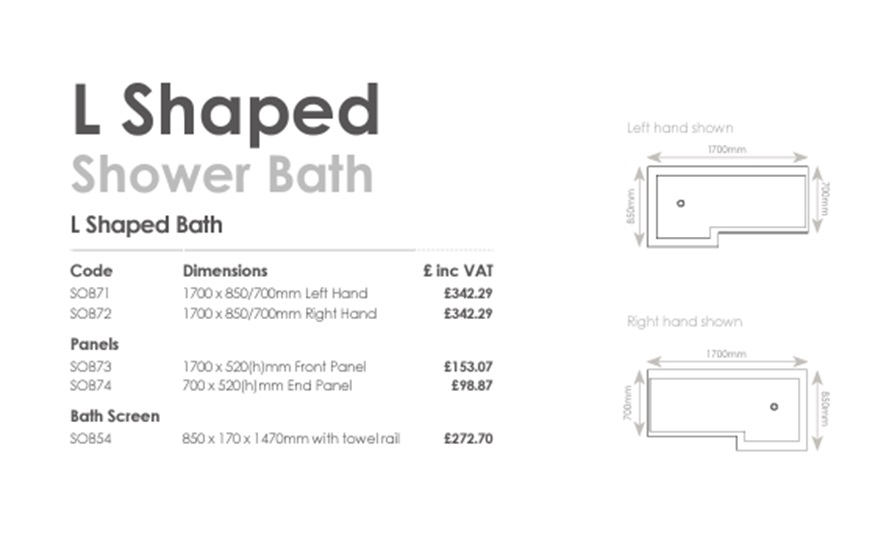
However, for straight handed baths this should be straightforward with a simple check of length, height, and width/outward depth from any walls.
That concludes everything required to know about handing, what it is, potential pitfalls, and how to accommodate for it in a bathroom. If there is a question missing that is not explained above, or that you feel needs adding, let us know by contacting us.
